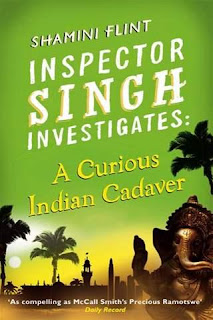Author: Bishwanath Ghosh
Reviewed by: Pinak Kapadia
We are a country that believes in stereotypes. The India of every Indian is different, and often has no similarity with the India of his neighbour. To make sense of this diversity, we are fond of stereotyping. A south Indian is a madrasi. I am a Gujju. Anyone living in Delhi is a 'Punjabi'. And worst of all, the people of North-east are 'chinkas'. Each of us hates being stereotyped, but we readily bracket the people around us. Our only common mass media, Bollywood re-inforces these images at every possible opportunity. It is refreshing to see Bishwanath Ghosh attempt to break stereotypes, and write across genres to come up with this gem of a book, Tamarind City.
Tamarind City attempts to do for Chennai what Suketu Mehta did for Mumbai with Maximum City. It would be fair to say that he largely succeeds in his aim. Chennai comes alive in every page of Tamarind City. When I picked up this book, there were a few stereotypes about chennai and its people in my mind. One, there are only two seasons there - Hot and Hotter. Two, the Chepauk crowd is the most knowledgeable cricket crowd in the country. And three, when it rains, it pours buckets (having being caught in a particular nasty november downpour myself there). I had some vague notions about Tam-Brahms through a Chetan Bhagat novel and newspapers. Tamarind City made me see the city through the eyes of a tourist, and the eyes of a resident.
The author has a varied perspective about the city, being an outsider who has stayed in Chennai for the last 10 years. He is a history buff, a journalist with a keen eye, and a storyteller. Ultimately, this book is all about the stories. Stories about the colonial history of chennai, its architecture and the people who started it all, from Robert Clive to Lord Hastings and others. Stories about the glorious past of the Fort St. George, the old city, and the white and black town of chennai, largely forgotten. Intriguing tales about the Tamil film industry, its superstars, and their lives (there is a tale about Rekha and her father which is particularly fascinating). Then there is the expected tale about the Tamil Brahmans, their taboos and their ways of life. The author is particularly adept at being non-judgmental l. He would be describing a particularly regressive or harrowing tale about the rituals, but he manages to stay aloof, and leaves the judgement call to the reader. This is a very rare trait, since, in most books, the author takes particular effort in making the reader see his point of view. I found it refreshing.
Then there are a couple of chapters dedicated to the life stories of the Tamil politicians, the Dravidian awakening and change in the political picture. The only complaint someone may find that sometimes the author gets too lost in his story, and gives us too many details. But that is a minor complaint, which does not stay with you after you have finished the book. There is a particularly fascinating chapter about life of the elderly in chennai after their sons have emigrated, with which anyone in India may identify. A few rags to riches and riches to rags tales are also good to read.
The author has a unique vantage point, since he has lived for more than a decade in the city, but is essentially an outsider. If one really wants to see a city, one needs the eyes of a tourist. We all might live in different cities, but how many of us have taken out the time to know and visit historical places in our own city? This is precisely why books like Maximum city, and Tamarind city make for such good reading. They help us look beyond the traffic woes, and the eternal struggle for day to day amenities like power, public transport, water, slums, and a multitude of such issues omnipresent in all Indian metros. They help us see the colours, the sights, sounds, which attract people from all over the world to India. Tamarind City brings out a vibrant chennai, and makes us long to go visit it. If only we can look beyond the heat.
Go buy the book, and change your stereotype of Madras. While I will try and grab the authors previous work, Chai Chai.









